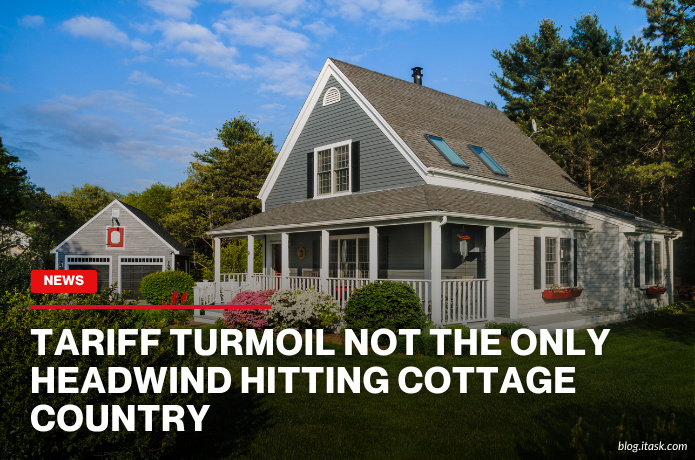Tariff turmoil not the only headwind hitting cottage country
Tariff turmoil not the only headwind hitting cottage country

Canada’s famed cottage country is facing a wave of challenges far beyond just the impact of recent tariffs. Homebuyers and cottage owners are feeling the strain from several angles, including a drop in lakefront property values, fear of rising interest rates, and a slowdown in market activity. While the incoming tariffs grab headlines, the region was already going through a period of adjustment after a red-hot housing boom.
High borrowing costs are a major worry for buyers. After years of borrowed money fueling steep price gains, rising interest rates are cooling the market. Prospective buyers are holding back, wary of stretching their budgets further. This restraint is slowing sales, leaving cottages lingering unsold for longer than they have in recent memory.
At the same time, property values in cottage country are retracing from their peak. After several years of dramatic increases, many lakeside properties are now selling closer to more realistic prices. Experts warn that this shift could continue if borrowing costs remain high or if international trade measures spark broader economic slowdown.
The new tariffs, framed as part of protectionist moves by the U.S., are adding a layer of uncertainty. Some believe they could ripple through Canada’s overall economy, affecting consumer confidence and demand—including in leisure real estate. However, insiders say tariffs aren’t the only—or even the biggest—factor affecting cottage prices right now.
Local real estate agents note that slower market activity started well before mention of tariffs. Buyers are cautious, often citing fears about long-term affordability. Sellers, meanwhile, are adjusting expectations, lowering listing prices or accepting multiple offers below their opening bids.
Looking ahead, the cottage market may stabilize in the coming months—but much depends on interest rates, economic growth, and whether tariffs escalate. If borrowing costs ease or the broader economy holds steady, cottage country could begin to see recovery. Until then, buyers and sellers alike are preparing for a slower, more measured pace in the waterfront housing market.
